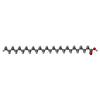+ Open data
Open data
- Basic information
Basic information
| Entry | Database: PDB / ID: 8y2m | |||||||||||||||||||||
|---|---|---|---|---|---|---|---|---|---|---|---|---|---|---|---|---|---|---|---|---|---|---|
| Title | Cryo-EM structure of the FB1-bound Lac1-Lip1 complex | |||||||||||||||||||||
 Components Components |
| |||||||||||||||||||||
 Keywords Keywords | TRANSFERASE / Inhibitor / Complex | |||||||||||||||||||||
| Function / homology |  Function and homology information Function and homology informationvery-long-chain ceramide synthase / acyl-CoA ceramide synthase complex / Sphingolipid de novo biosynthesis / sphingosine N-acyltransferase activity / ceramide biosynthetic process / nuclear periphery / nuclear envelope / endoplasmic reticulum membrane / endoplasmic reticulum Similarity search - Function | |||||||||||||||||||||
| Biological species |  | |||||||||||||||||||||
| Method | ELECTRON MICROSCOPY / single particle reconstruction / cryo EM / Resolution: 3.07 Å | |||||||||||||||||||||
 Authors Authors | Xie, T. / Zhang, Z. / Fang, Q. / Gong, X. | |||||||||||||||||||||
| Funding support | 1items
| |||||||||||||||||||||
 Citation Citation |  Journal: Structure / Year: 2024 Journal: Structure / Year: 2024Title: Mechanism of ceramide synthase inhibition by fumonisin B. Authors: Zike Zhang / Qi Fang / Tian Xie / Xin Gong /  Abstract: Ceramide synthases (CerSs) play crucial roles in sphingolipid metabolism and have emerged as promising drug targets for metabolic diseases, cancers, and antifungal therapy. However, the therapeutic ...Ceramide synthases (CerSs) play crucial roles in sphingolipid metabolism and have emerged as promising drug targets for metabolic diseases, cancers, and antifungal therapy. However, the therapeutic targeting of CerSs has been hindered by a limited understanding of their inhibition mechanisms by small molecules. Fumonisin B (FB) has been extensively studied as a potent inhibitor of eukaryotic CerSs. In this study, we characterize the inhibition mechanism of FB on yeast CerS (yCerS) and determine the structures of both FB-bound and N-acyl-FB-bound yCerS. Through our structural analysis and the observation of N-acylation of FB by yCerS, we propose a potential ping-pong catalytic mechanism for FB N-acylation by yCerS. Lastly, we demonstrate that FB exhibits lower binding affinity for yCerS compared to the C26- coenzyme A (CoA) substrate, suggesting that the potent inhibitory effect of FB on yCerS may primarily result from the N-acyl-FB catalyzed by yCerS, rather than through direct binding of FB. | |||||||||||||||||||||
| History |
|
- Structure visualization
Structure visualization
| Structure viewer | Molecule:  Molmil Molmil Jmol/JSmol Jmol/JSmol |
|---|
- Downloads & links
Downloads & links
- Download
Download
| PDBx/mmCIF format |  8y2m.cif.gz 8y2m.cif.gz | 187.5 KB | Display |  PDBx/mmCIF format PDBx/mmCIF format |
|---|---|---|---|---|
| PDB format |  pdb8y2m.ent.gz pdb8y2m.ent.gz | Display |  PDB format PDB format | |
| PDBx/mmJSON format |  8y2m.json.gz 8y2m.json.gz | Tree view |  PDBx/mmJSON format PDBx/mmJSON format | |
| Others |  Other downloads Other downloads |
-Validation report
| Summary document |  8y2m_validation.pdf.gz 8y2m_validation.pdf.gz | 716.5 KB | Display |  wwPDB validaton report wwPDB validaton report |
|---|---|---|---|---|
| Full document |  8y2m_full_validation.pdf.gz 8y2m_full_validation.pdf.gz | 784.5 KB | Display | |
| Data in XML |  8y2m_validation.xml.gz 8y2m_validation.xml.gz | 28.9 KB | Display | |
| Data in CIF |  8y2m_validation.cif.gz 8y2m_validation.cif.gz | 38.3 KB | Display | |
| Arichive directory |  https://data.pdbj.org/pub/pdb/validation_reports/y2/8y2m https://data.pdbj.org/pub/pdb/validation_reports/y2/8y2m ftp://data.pdbj.org/pub/pdb/validation_reports/y2/8y2m ftp://data.pdbj.org/pub/pdb/validation_reports/y2/8y2m | HTTPS FTP |
-Related structure data
| Related structure data |  38857MC  8y2nC  8zb1C M: map data used to model this data C: citing same article ( |
|---|---|
| Similar structure data | Similarity search - Function & homology  F&H Search F&H Search |
- Links
Links
- Assembly
Assembly
| Deposited unit | 
|
|---|---|
| 1 |
|
- Components
Components
| #1: Protein | Mass: 50289.082 Da / Num. of mol.: 2 Source method: isolated from a genetically manipulated source Source: (gene. exp.)   Homo sapiens (human) Homo sapiens (human)References: UniProt: P28496, very-long-chain ceramide synthase #2: Protein | Mass: 17228.682 Da / Num. of mol.: 2 Source method: isolated from a genetically manipulated source Source: (gene. exp.)   Homo sapiens (human) / References: UniProt: Q03579 Homo sapiens (human) / References: UniProt: Q03579#3: Chemical | ChemComp-6PL / ( #4: Chemical | Mass: 721.830 Da / Num. of mol.: 2 / Source method: obtained synthetically / Formula: C34H59NO15 / Feature type: SUBJECT OF INVESTIGATION #5: Chemical | Has ligand of interest | Y | Has protein modification | Y | |
|---|
-Experimental details
-Experiment
| Experiment | Method: ELECTRON MICROSCOPY |
|---|---|
| EM experiment | Aggregation state: PARTICLE / 3D reconstruction method: single particle reconstruction |
- Sample preparation
Sample preparation
| Component | Name: FB1-bound Lac1-Lip1 complex / Type: COMPLEX / Entity ID: #1-#2 / Source: RECOMBINANT |
|---|---|
| Source (natural) | Organism:  |
| Source (recombinant) | Organism:  Homo sapiens (human) Homo sapiens (human) |
| Buffer solution | pH: 7 |
| Specimen | Embedding applied: NO / Shadowing applied: NO / Staining applied: NO / Vitrification applied: YES |
| Vitrification | Cryogen name: ETHANE |
- Electron microscopy imaging
Electron microscopy imaging
| Experimental equipment |  Model: Titan Krios / Image courtesy: FEI Company |
|---|---|
| Microscopy | Model: FEI TITAN KRIOS |
| Electron gun | Electron source:  FIELD EMISSION GUN / Accelerating voltage: 300 kV / Illumination mode: FLOOD BEAM FIELD EMISSION GUN / Accelerating voltage: 300 kV / Illumination mode: FLOOD BEAM |
| Electron lens | Mode: BRIGHT FIELD / Nominal defocus max: 2000 nm / Nominal defocus min: 1000 nm |
| Image recording | Electron dose: 50 e/Å2 / Film or detector model: GATAN K3 (6k x 4k) |
- Processing
Processing
| EM software | Name: PHENIX / Category: model refinement | ||||||||||||||||||||||||
|---|---|---|---|---|---|---|---|---|---|---|---|---|---|---|---|---|---|---|---|---|---|---|---|---|---|
| CTF correction | Type: NONE | ||||||||||||||||||||||||
| 3D reconstruction | Resolution: 3.07 Å / Resolution method: FSC 0.143 CUT-OFF / Num. of particles: 507891 / Symmetry type: POINT | ||||||||||||||||||||||||
| Refine LS restraints |
|
 Movie
Movie Controller
Controller





 PDBj
PDBj



